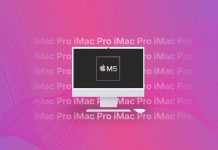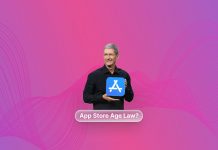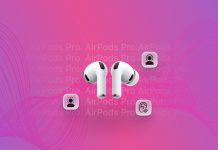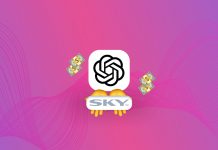
Apple took the stage Monday at WWDC, and as expected, the company announced the next version of iOS. The operating system that runs the iPad, iPhone, and iPod Touch received some pretty great upgrades, including under-the-hood improvements to key features like AirDrop, Messages, and the default keyboard.
iOS 8 will ship in September of this year, and we expect it will go live the same time we get new Apple hardware. As for beta testers and developers, the first beta version of iOS 8 will be available later today.
The biggest area of address during the keynote was clearly interoperability between iOS and OS X. Many, myself included, have called for a “Snow Leopard”-type update for iOS. That is, an update that, despite a lack of bells and whistles, would address underlying problems with iOS. Apple took little time in addressing the problems.
Table of Contents
Continuity
Gone are the days of emailing yourself files from your Mac to your iPhone: iOS and OS X now play nicely together. AirDrop now works between both iOS and OS X devices, making it easier than ever to share files and data from one device to another. iOS now knows exactly what you’re working on, and will allow you to pick up where you left off on OS X (and vice-versa). You can start typing up an email on your Mac and finish it on your iPhone, or open a spreadsheet on your iPad that you had open on your Laptop, never missing a beat as you move from one device to another.
While it may not fit under Apple’s “Continuity” moniker, interactive notifications in iOS is another feature that Apple took from OS X and integrated into its mobile operating system. In iOS 8, you will be able to reply to messages from directly within a notification, accept and decline calendar events, as well as access a multitude of features from within third party applications. One particular example had Craig Federighi, Apple’s SVP of Software Engineering, showing off an eBay feature that would let users place bids directly from within notifications.
New “Multitasking” Double-Tap Features
Apple has taken its “home button double-tap” multi-tasking pane to a new level in iOS 8. The app switcher now also provides easy access to recent contacts, letting you jump right into a phone call or message without having to dig through the Contacts app for contact details.
Spotlight
App Store links, Wikipedia entries, restaurant recommendations and iTunes suggestions are all available from directly within Spotlight this time around, so you don’t need to rely on a third-party app or go do a Google search. There was no mention of a way for third party developers to get in on the Spotlight action, so the jury is out whether or not you’ll be able to do things like search Amazon from directly within Spotlight.
Quick type
Many iOS users—especially those coming from Android—have complained about Apple’s archaic keyboard system in iOS. It seems that Apple has heard the complaints: Starting with iOS 8, Apple will let users install their own third party keyboard applications. Privacy was a key motif throughout the keynote, and Apple has built failsafes into iOS 8 to prevent your information from ever leaving your device; however, this time around, Apple is also giving you the ability to wave those preventions and let certain third-party keyboards offload the predictive keyboard tools to third-party servers.
Apple’s new predictive keyboard keeps all of your personalized predictions local, and unlike Siri, it never offloads its database to Apple servers for crunching. Perhaps the neatest feature of Quick Type is its ability to recognize the various ways you interact with different people. If you speak one way to colleagues and another to your friends, Quick Type can identify that shift in tone and suggest words that better fit your conversation.
Messages
Apple’s most frequently used app has received some new tools. Group messaging has been given a nice little overhaul to let users name threads, add or remove people from group chats, mute a certain thread (thanks to an improved Do Not Disturb feature), as well as leave a thread entirely at any time. You can no longer be held hostage in terrible iMessage conversations.
Additionally, Apple has given users the ability to share their location with friends, making it easier to share directions than it was before.
Continuing along the privacy theme, Apple has also let you send self-destructing audio messages, video messages, and photo messages from directly within the Messages app. (Move on over, SnapChat; Apple is trying to Sherlock you, too.) All you have to do is “tap to talk” the microphone or camera icon and Apple will send off a media message of your choice. Instead of eating up your precious storage space, these particular message types will self destruct. You can, however, also save them should you decide to, so maybe SnapChat isn’t exactly dead after all. There’s also no word on whether or not messages will self destruct on the receiving phones too, so evidence could linger still.
iCloud Drive
Also new is a cloud storage system called iCloud Drive. The service, still somewhat vague even after the announcement, will help with getting files across apps, and across platforms. The files will always be saved back to its original location, removing the problems of saving multiple versions of a file and syncing them between apps. Think of it as a version of Dropbox that hooks in neatly with other iOS apps. You can get at files stored on iCloud drive through a Finder window in OS X, and it’s also available for iOS and Windows. The iOS version of the service will continue to work like Apple’s iOS 7 iteration of its Sharing window; there will not be a Finder-like application for iOS.
HealthKit, Health App (API)
While the rumors were pretty far off on the hardware end of things (there’s no iWatch/monitor thingy), Apple did take a moment to announce a new API, called HealthKit, and an app (the obviously named Health) to collect the API data. The API helps to collect information from several current health-based tools and apps for iOS and pull it into one place, the Health app. Major brands like Nike can now dump important information like workout data directly into Health. You no longer need an array of apps to manage multiple things like heart information, diabetes information, and then a third for your workout information.
In short, everything can now be wrapped up into a single pretty little application, making it easier than ever to share your information with your doctor and health professionals. Good stuff.
Family Sharing
Apple gets it—you want to share your music, movies, and books with family members. And with iOS 8, you will be able to share media, movies, music, and books you’ve purchased through Apple’s content stores with up to six family members, provided that all the accounts are tied to the same credit card. Apparently, however, sharing with friends is out of the question. Apple didn’t mention what will happen when a family member suddenly turns 18 and starts buying their own movies in iTunes, but based on implied hints during the keynote, they’ll likely be cut off from family sharing.
I’d be willing to bet the conditions of sharing were driven more by industry and less by Apple, but we can’t deny it’s a step in the right direction. It’s still has a little bit to go, though. I should be able to share songs with my brother, even temporarily, if we’re older than 18 and have our own credit cards at this point. It’s a start, though.
The best part about family sharing is that kids now have to ask permission of parents before purchasing content from the iTunes Store or App Store. Parents will be prompted, and asked if they want to allow the purchase. That’s fantastic.
Final Thoughts
iOS 8 is exactly what we thought it would be: an iteration on iOS 7 that brings with it improved stability, better cross-platform interoperability, and a cleaner approach to a number of problems that have been kicking around iOS for a number of years now. With today’s keynote news we’re only scratching the surface of what iOS has in store for us this time around. Apple announced its major updates today, but there’s bound to be plenty of changes between now and September when the operating system officially launches. Everything mentioned here should be considered to be in flux. A lot can change between now and September.







